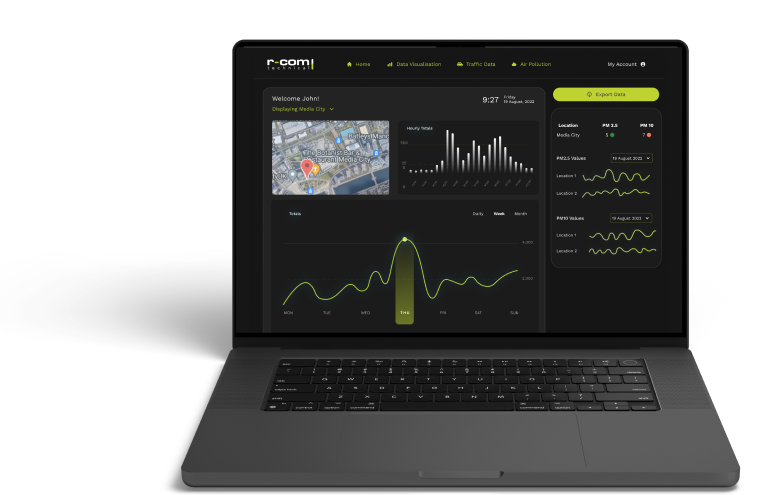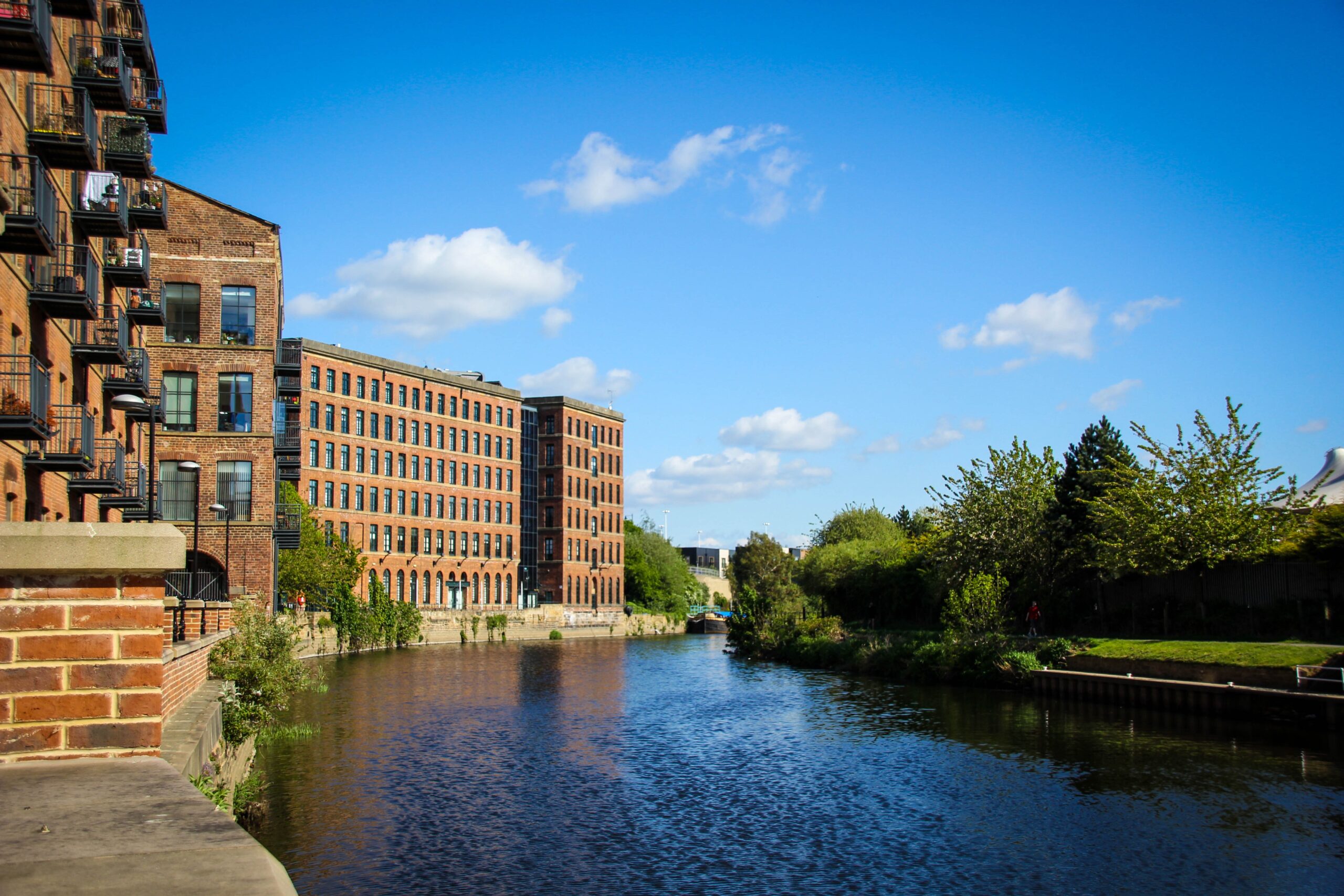Air quality sensors and monitors
The R-Com IoT Air Quality Unit (AQ) uses leading air quality sensors to accurately monitor air quality and pollution levels in real time.

How does our air quality monitor work?
Finally, an alternative to traditional manual diffusion tubes for monitoring pollution. The R-Com IoT Air Quality Unit uses a sensor to record and compare CO2, NO2 and NO3 plus PM1, PM2.5, PM10 levels in a specific zone.
The wall- or post-mounted unit has an active sensor recording outdoor CO2, NO2 and NO3, plus PM1, PM2.5 and PM10 levels.
A dedicated AQ processor module captures the live data.
The data is transferred to an onboard MQTT logger unit for storage.
Stored data is converted to industry-standard MQTT format before being sent via Wi-Fi (or network protocols) to a remote cloud-based server.
Air quality sensors and monitors: Product Features
Public health and safety issues related to pollution are a global problem just as much as a local problem. Outdoor air quality monitoring provides key data for decisions that councils, governments and business leaders need to make.

With no room for error, our systems offer:
Real-time data. You don’t have to wait to analyse your air quality data. Our compressed data is delivered instantly, in real time – this allows you to carry on with continuous, automated monitoring.
Extremely secure data transfer. Your air quality data is stored and transferred in MQTT format. This reduces the impact of network disruption, minimises data volume and increases transfer speeds. This method also ensures GDPR compliance and supports 3rd-party data analysis platforms.
Upgradable modules. We can add optional upgrades to enhance and compare your data. We offer extra modules for cycle counting, car park management, and traffic monitoring.
Multiple connection options. Our devices support multiple network connectivity protocols. Compatible with WAN, LAN, cellular and LoraWAN.
Outstanding data storage solutions. Store your data securely in our remote cloud server. The use our dashboard software for secure storage, back-up, access, plus handy tools for data analysis and sharing.
What are the benefits of installing air quality monitors?
Of course, ensuring public health and safety in populated areas is the main benefit of measuring air quality. But manual diffusion tubes will soon be a tool of the past. Our automated IoT air sensors provide a more cost-effective way of collecting and sharing pollution measurements in the long term.
The small size and ease of installation means you can set up many monitoring points around the city – mapping air pollution black spots. Understanding the impact of these areas provides invaluable insight for both public and private sectors in roles such as:

- Developers
- Consultants
- Third-party agencies (Highways England, Highways Scotland)
- Environmental organisations
- Business owners
- Urban planners
- Local councils
- National government bodies
Air quality sensors and monitors: Product Uses
We tailor R-Com solutions to fit our customers’ air quality testing needs as much as we can. With this dynamic piece of kit, your business or organisation can use in our units in order to:
Precisely capture and compare pollution data. Accurately record harmful pollution levels around an area, at any time of day or night. Allows you to gather data with a direct correlation between traffic counts and air pollution levels.
Monitor air pollution levels to keep people safe. Record changes in pollution levels while keeping an eye on pedestrians with our footfall counting upgrade unit. Monitor air quality around industrialised areas with factories – looking out for the workers as well as local residents. Identify and verify pollution-related health and safety problem areas.
Validate public health initiatives. Pollution level data gives policymakers the push towards making smarter and greener cities. With good air quality, it could increase how many people make walking and cycling trips without the fear of pollution, and ultimately improving their general health.
Analyse peak activity impact. Examine the changes in air quality around major city events, football games, concerts and public gatherings, which increase traffic and congestion. Monitor industrial pollution levels within reach of busy walking or cycling routes at peak times of day.
Safeguard local green areas. Ensure pollution levels around green public spaces and public facilities are minimised. Use the data to identify and prosecute polluters or make changes to roads and traffic management policy.
Plan traffic flow for a positive effect. Implement flow strategies around hotspot areas like schools, where reducing traffic is crucial. Encourage healthier modes of travel through the influence of seeing less cars on the street in hotspot areas.
What makes R-Com air quality sensors unique?
While plenty of NOx sensors and particulate monitoring systems already exist on the market today, there’s nothing quite like an R-Com AQ sensor solution.

Use the latest generation of laser particle counters in order to immediately report levels of harmful particulates in the air at various locations.
Can be placed on their own or added to our people and vehicle counting units, using the same power supply. Use air monitors in tandem with other IoT systems like the vehicle and pedestrian counting units.
Are highly reliable and provide data in real-time. This allows for continuous and immediate pollution monitoring, 24 hours a day.
TrustedBy

















